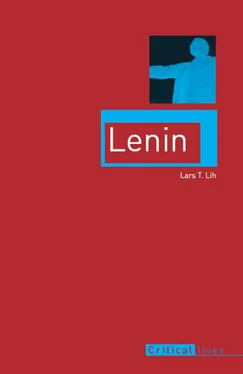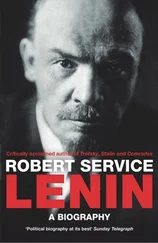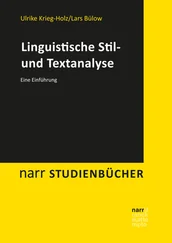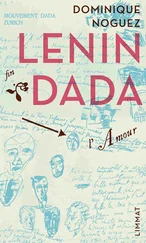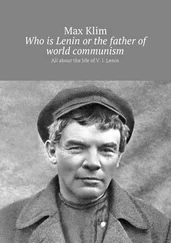In his final articles of early 1923 Lenin once again calls upon the aid of proletarian leaders who arise directly from the working class, but now in a much smaller and more prosaic context. The grand vistas of the civil war have receded and Lenin now calls on recruits from the working class to improve the working of the state administrative machinery. The institutional details of his scheme are less important to us than its reliance on class leadership in yet another guise. Just as in What Is to Be Done? Lenin’s 1923 plan was to recruit up-and-coming workers from the bench into responsible posts in the party organization, with the same expectation that this infusion will make the party unbeatable. 55
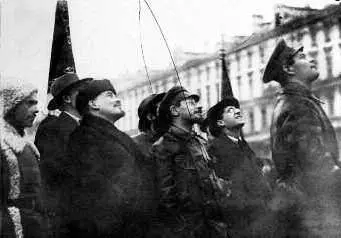
At the unveiling of a statue to Marx and Engels, November 1918: Lenin next to Jacob Sverdlov (Lenin’s model of inspiring leadership).
But Lenin was now determined to keep the whole process under control. The task previously given to the masses, acting through the soviets, is now handed to the party, acting from above: ‘We still have the old machinery, and our task now is to remould it along new lines. We cannot do so at once, but we must see to it that the Communists we have are properly placed… Our party, a little group of people in comparison with the country’s total population, has tackled this job. This tiny nucleus has set itself the task of remaking everything, and it will do so.’ 56
Despite the contrived and mundane nature of the organizational scheme propagated in his final articles, Lenin invested it with his usual emotional fervour. In 1902 he wrote about his scheme for an underground newspaper: ‘That is what we must dream about!’ In 1923 he wrote about his scheme to improve state administrative machinery: ‘These are the lofty tasks I dream of for our Rabkrin [Worker and Peasant Inspection].’ 57
Lenin’s Rabkrin scheme was an attempt to overcome the cultural deficit that Lenin blamed for the deficiencies of the soviet bureaucracy. It has the air of a desperate improvization, an attempt to square the circle, and as such it was never remotely practicable. But the other prong of Lenin’s attack on the cultural deficit was much more substantive: mass education for the narod . We might call this Lenin’s kukharka strategy, after his famous boast in 1917 that the Bolsheviks would teach the kukharka , the female cook, how to administer the state.
In ‘Pages from a Diary’, the most eloquent of Lenin’s final articles – and one that has not received the attention it deserves – we see for the last time Ilich, son of Ilya Ulyanov, the tsarist educational reformer. After going through some statistics showing Russia’s low literacy, Lenin insists that education of the narod must be made a top priority. The country must make a real shift in budgetary priorities toward education, particularly by improving the material position of the schoolteacher of the narod . The status of the schoolteacher should be higher in Soviet Russia than in any bourgeois society.
True to his lifelong scenario, Lenin sees the ‘gigantic, world-historical cultural task’ of mass education in terms of class leadership, as drawing the peasant ‘away from union with the bourgeoisie and toward union with the proletariat’. At the end of his career Lenin once again summoned up the ultimate guarantor of his ‘other way’: the Russian people on the move, transformed by the pressures of modernity, eager to liquidate the heritage of pre-modern backwardness, or, as Lenin put it, the ‘semi-asiatic absence of culture’:
We are speaking of the semi-asiatic absence of culture, from which we have not yet extricated ourselves, and from which we cannot extricate ourselves without strenuous effort – although certainly the possibility exists of our doing so, because nowhere are the masses of the narod so interested in real culture as they are in our country; nowhere are the problems of culture posed so profoundly and consistently as they are in our country; in no other country is the state vlast in the hands of the working class which, in its mass, is fully aware of the deficiencies, I shall not say of its culture, but of its literacy; nowhere is the working class so ready to make, and nowhere is it actually making, such sacrifices to improve its position in this respect as in our country. 58
Lenin’s attempts to move beyond the ‘textbook à la Kautsky’ took its toll. From 1919 his speeches lose their earlier sharpness and become progressively more unfocused, repetitive, digressive. He becomes defensive and halting as he searches for a way to match his ideological scenario with events. A new and unexpected quality appears: Lenin is unsure of himself.
Nevertheless, in his articles published in January 1923 Lenin strove to achieve at least a provisional synthesis. The result is an idiosyncratic blend of anxiety and confidence. Lenin could not really abandon the axioms of the textbook à la Kautsky even when they challenged the legitimacy of socialism in Soviet Russia. Among these axioms are the following: Only a series of revolutions in the advanced countries will crush capitalism. A successful fight for socialism in Russia requires the dissolution of the peasantry into bourgeoisie and proletariat. Small-scale production for the market engenders capitalism. The proletariat will achieve socialism on the basis of the cultural achievements of capitalism. Lenin believed in these axioms all his life, and he couldn’t stop believing them simply because they had become inconvenient. As a result Lenin saw the Bolsheviks encircled by three founts of anxiety: international capitalism, the ‘petty-bourgeois’ peasantry and the dubiously loyal ‘soviet bureaucrat’.
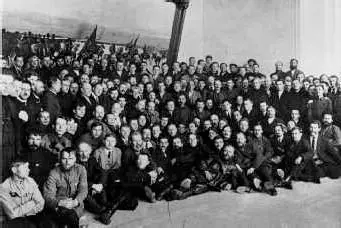
Lenin fades away, but the new elite remains (one of Lenin’s last public appearances, October 1922).
Even so, Lenin looked to the future with confidence, on the basis of an adjusted version of his heroic scenario. If by ‘Lenin’s testament’, we mean his final message to the party, it can be summarized as follows:
Hopes have faded for socialist revolution in Europe anytime in the foreseeable future? Then take courage from the inevitable awakening of the East, while praying that inter-capitalist squabbles will allow socialist Russia to hold out.
Hopes have faded that the peasants would move toward socialist transformation on their own initiative? Then take the Old Bolshevik scenario of class leadership that had vindicated itself during the civil war and apply it to the novel task of leading the ‘middle peasant’ to socialism.
Hopes have faded that soviet-style democracy from below will transform the state? Then use the party to remake the inherited state apparatus from above, and put the highest possible priority on campaigns for mass literacy.
Do all these faded hopes mean that our socialist critics were right and that Russia was not ready for socialism? Yes, but – who’s to say that a proletarian vlast cannot pull itself up by its own bootstraps by itself creating the cultural prerequisites for socialism?
Lenin’s final stroke on 6 March 1923 marks the real end-point of his life and work, although his physical death came almost a year later. During the rest of 1923 Lenin was barely able to communicate. A moving description of Lenin’s state during this period comes from a letter from Yevgeny Preobrazhensky to Bukharin, describing a visit to Lenin in July 1923:
Читать дальше
